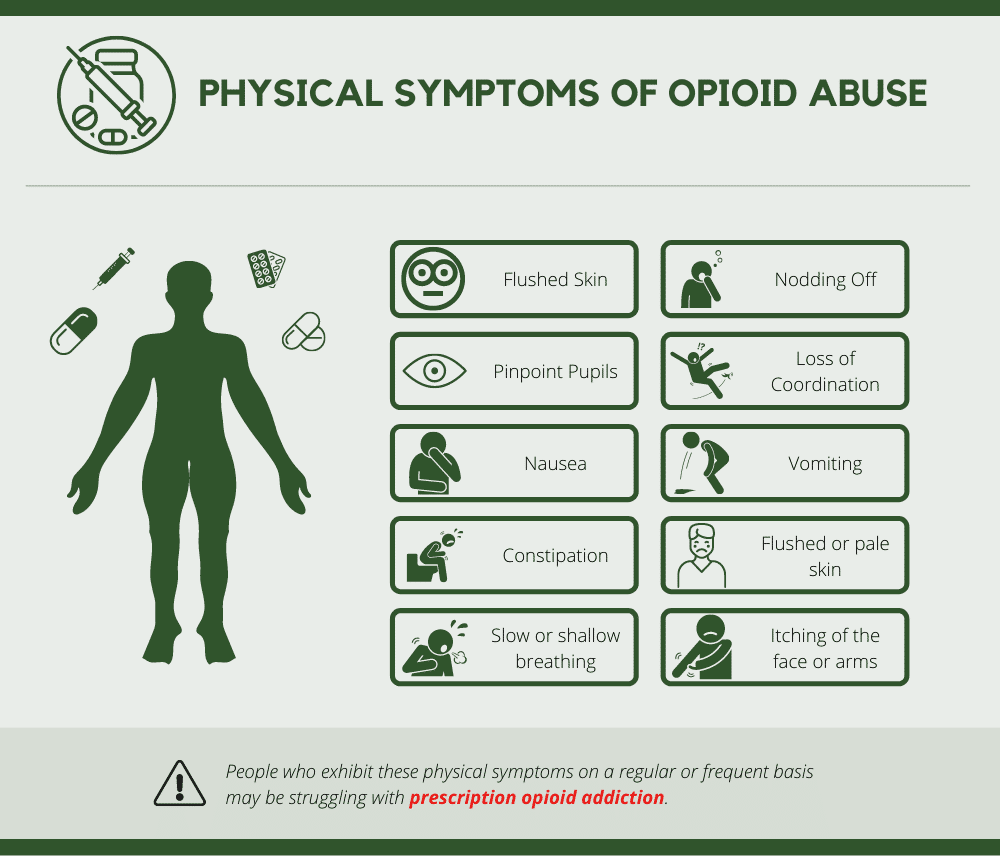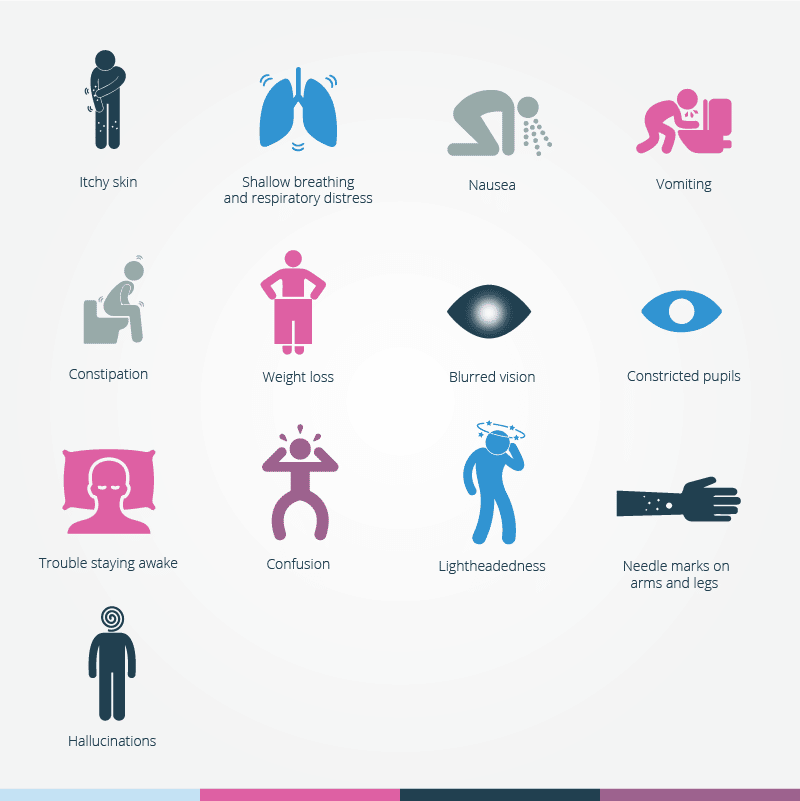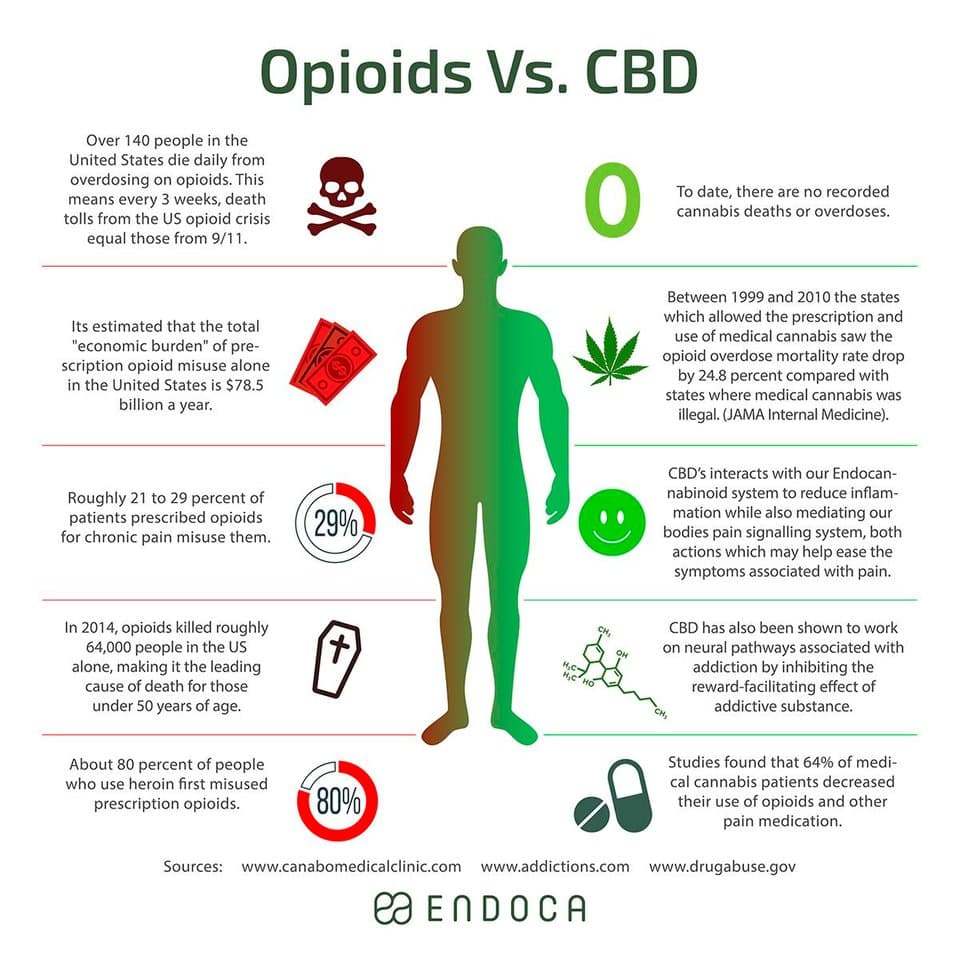They May Be Doctor Shopping
Doctor shopping is when a patient obtains opioid prescriptions from multiple healthcare providers, without the prescribers knowing that the patient already has another prescription. They may claim to have lost their prescription and need another one filled. Often, they are not taking the medication as prescribed and run out of the pills too early. They may also complain the pain is so bad they need a stronger prescription.
What Is Opioid Addiction
Opioid addiction is the compulsive use and a lack of control of opioids, whether they are medications or illegal substances. Once addicted, the urges to use opioids are so intense that it can be hard to stop. Continuing to use opioids despite significant consequences is one of the most telling signs of addiction.
Opioids include, but arent limited to:
A crucial step to overcoming addiction is knowing the signs, but they arent always apparent. Each person experiences addiction differently, and opioid and opiate use can be challenging to notice. The symptoms are subtle, but looking closer can save a life.
Here are seven common signs of opioid use and addiction.
Signs Of An Opioid Addiction
Over 16,000 people died due to an overdose involving prescription opioids in 2020, according to the Centers for Disease Control and Prevention. While opioids can be successfully used to manage pain, they can also be misused, and dependence can develop rapidly. If you’re concerned by your own opioid use or that of a loved one, read on to learn more about important signs of addiction to look for, and how to get help.
Read Also: How To Deal With An Addictive Personality
What Is The Difference Between Drug Tolerance Dependence And Addiction
Drug tolerance and dependence are a normal part of taking any opioid drug for a long time. You can be tolerant to, or dependent on, a drug and not yet be addicted to it.
Addiction, however, is not normal. It is a disease. You are addicted to a drug when it seems that neither your body nor your mind can function without the drug. Addiction causes you to obsessively seek out the drug, even when the drug use causes behavior, health, or relationship problems.
Deteriorating Mentally On A Wide Scale

Drug addiction causes a loss of memory, reasoning, and other mental functioning.
Is your loved one no longer alert or aware of important matters? Do things seem oblivious to him or her or does it seem like he or she is in a constant haze? Opiate addiction can cause mental deterioration as the user becomes more dependent on thought processes associated with finding the next dose of opiates and getting high and less dependent on priority thoughts that really matter.
The deterioration in cognitive abilities of someone who is addicted to drugs is so strong, in fact, that the US National Library of Medicine describes addiction as a disorder of altered cognition. In addition to the dominance of drug-seeking behaviors over an individuals thought process, the memory, attention, reasoning, and impulse control of drug addicted individuals are all likely to be impaired to some degree. Sometimes these changes are hard to detect in someone else, but can be recognized by the individual in question themself.
You May Like: How To Treat Opioid Addiction
Opioid Use & Abuse Statistics In The Us
A national study in 2018 estimated that among Americans aged 12 or older:7
- About 10.3 million people had misused opioids in the last year.
- About 9.9 million people had misused prescription opioids in the last year.
- Approximately 808,000 people had used heroin in the last year.
- Approximately 2 million people had an opioid use disorder.
- About 1.7 million people had a painkiller use disorder.
- Approximately 526,000 people had a heroin use disorder.
Hydrocodone was the most commonly misused prescription opioid, with about 5.5 million Americans aged 12 or older abusing it in 2018.7 Oxycodone was the second-most commonly misused prescription opioid, with approximately 3.4 million Americans aged 12 or older abusing it in 2018.7
Efforts to address the opioid epidemic have led to prescription opioids becoming less available, and people have turned to alternate routes to obtain them in some cases.8 People may buy prescription opioids from others, which can be very costly, while heroin has similar effects and can be cheaper and easier to access.6 In people who use heroin, 80% have a history of prescription opioid misuse.6, 8, 9
Signs Someone Is High On Opioids
There are some marked clues of opioid use, Andrew Tatarsky, PhD, psychotherapist and founder of the Center for Optimal Living in New York City, tells WebMD Connect to Care.
âOne of the hallmark characteristics is pinned pupils. Thatâs one of the very specific effects heroin has,â Tatarsky says. âYou might find somebody being oddly activated in some way, or in higher doses, certainly having trouble staying straight or nodding, which is sort of the traditional way to talk about it.â
In other words, if someone is high on opioids, you may notice symptoms like:
- Pinpointed pupils
The person whoâs high might have physical symptoms including:
- Low blood pressure
Don’t Miss: How To Get Over Love Addiction
Between Abuse And Addiction
Opioids generally produce pleasant euphoric and soothing effects, aside from the painkiller action. Naturally, your body seeks out those feelings in any way it can. Over time, the effects of the same dose of the drug reduce progressively. This is called tolerance.
Initially, this may be harmless. You may start to seek a higher dose of the drug. If this happens without the express approval of a doctor, opioid abuse sets in.
Opioid abuse is typically defined in one of the following ways. First is taking larger amounts of the prescribed drug. It may also be administering the medication more frequently than necessary.
Another sign is using the drug with other substances to increase its effects. Opioid abuse may lead to a deep-seating addiction, often strenuous to get out of without help.
Addiction is the use of opioids to a point where you cannot function without the drug. A crucial clue to this is a deep craving for the drugs. Essentially, you are willing to go great lengths for it.
Sometimes, you may snap out of it and be desperately willing to quit. But if you cannot control the substance use, you will end up falling back.
Opioid abuse and addiction often go hand in hand. One does not always precede the other. Many times, they start harmless. However, when it gets out of control, it is necessary to tackle it promptly.
Opiate Addiction Signs That Point To Addiction
Opiate addiction is a treatable illness through a combination of behavioral therapy and medication to minimize withdrawals and cravings for more opiates. If you are concerned that a loved one is struggling with opiate addiction, here are three signs of opiate addiction to look for:
There are several other opiate addiction signs that point to opiate addiction. If a friend is abusing opiates, talk to them about the dangers of addiction and your concerns for their health and well-being.
Read Also: Can You Get Addicted To Suboxone
You May Find Odd Items / Drug Paraphernalia
Opioids are abused in several ways. Theyre taken orally, snorted, smoked, or injected. You may find odd items in rooms or trash cans like piles of burnt tinfoil, medication bottles with labels ripped off, tiny pieces of balloons, or bloodied cotton swabs. You might find other abuse items like hose clamps, syringes, needles, rolled up dollar bills, and so on.
Risk Factors For Opioid Addiction
Several risk factors may make a person more susceptible to an opioid use disorder.
These may include:
Numerous factors can contribute to opioid use disorder. These include:
Experiencing childhood neglect or abuse or living in poverty or a rural place are factors that have been associated with opioid addiction. Having easy access to opioids is another factor, as are certain personality traits like being impulsive or sensation-seeking.
Variations in certain genes are also believed to play a role in addiction.
Read Also: How To Get Off Xanax Addiction
What Is Drug Dependence
Drug dependence is when the way your body works changes because you have taken a drug for a long time. These changes cause you to have withdrawal symptoms when you stop using the drug. Withdrawal symptoms can be mild or severe, and may include:
If you have been taking a prescription opioid for a long time, work with your doctor. They can help you avoid withdrawal symptoms by gradually lowering your dose over time until you no longer need the medicine.
Statistics Of Opioid Addiction

The United States Substance Abuse and Mental Health Services have discovered that next to marijuana, the nonmedical usage of prescription painkillers is the second most common form of illegal drug use. In 2007, SAMSHA reported that 5.2 million individuals 21% of people over the age of twelve used a prescription painkiller for nonmedical purposes. The US DEA believes that estimate to be closer to 7 million individuals.
In 2006, the Drug Abuse Warning Network reported that about 324,000 emergency room visits involved painkillers.
Causes
Recommended Reading: Why Is Facebook So Addictive
Why Do People Become Addicted To Opioids
Opioids can make your brain and body believe the drug is necessary for survival. As you learn to tolerate the dose youâve been prescribed, you may find that you need even more medication to relieve the pain or achieve well-being, which can lead to dependency. Addiction takes hold of our brains in several ways â and is far more complex and less forgiving than many people realize.
Learn About Opioid Abuse & Addiction
Opioids are a type of drug that have both legal and illicit uses. Natural opioids come from the opium poppy plant, while synthetic opioids are created in labs. In controlled settings, opioids are powerful analgesics, or painkillers. When used recreationally, however, opioids reduce pain, cause sedation, and bring about feelings of euphoria. Morphine, oxycodone, hydrocodone, and codeine are all opioids that are commonly prescribed to treat pain, while heroin is an illegal opioid.
All opioids, even those legally prescribed, have the potential for abuse should they be used at high doses or for a long period of time. Opioids are so powerful because they activate built-in painkilling and reward circuits in the brain. They mimic brain chemicals that are associated with pleasurable feelings and pain reduction. With continued use, a persons craving for the pleasurable feelings brought on by opioids can begin to take over his or her life. Thankfully, help is available for those with an opiates addiction at Keystone Treatment Center.
Statistics
Recommended Reading: Cognitive Behavioral Therapy For Drug Addiction
Common Signs Of Opiate Addiction
There are many potential warning signs of opiate addiction that friends and family members of an addict mistakenly overlook or fail to recognize. In some cases, recognizing the early warning signs of an addiction to opiates can help you find proper treatment early on and prevent the need for lifelong medications or extreme intervention methods in order to stop the dangerous addiction in its tracks. These are some of the most common, and often overlooked signs of opiate addiction that anyone who is taking opiates or who knows someone who is taking opiates should be on the lookout for.
Why People Become Addicted To Opioids
Studies have started to reveal significant gender differences in opioid abuse and addiction, however this may only mildly influence ones ability to diagnose opioid addiction. While in the past, substance abuse research has been largely focused on men, it has recently been discovered that the differences between men and women are profound.
Women face a higher risk of developing opioid addiction largely because they are more likely to experience chronic pain than their male counterparts. While the percentage of men that die from drug overdoses is overall greater than that of women, there is evidence that shows that women are the ones that are more prone to initiate opioid use. That is because doctors usually prescribe opioids to women for longer periods, increasing the probability of them developing an addiction.
You May Like: Medication To Stop Drug Addiction
Opiate Symptoms And Warning Signs
Start the road to recovery
Take the first step towards recovery
Opiate Info
Get confidential help 24/7. Call now for:
- Access to licensed treatment centers
- Information on treatment plans
Addiction Center is not affiliated with any insurance.
Common Questions About Rehab
Am I covered for addiction treatment?
Have a confidential, completely free conversation with a treatment provider about your financial options.
Signs Of Opioid Addiction To Never Ignore
Opioids are highly addictive drugs that are designed to numb pain. Unlike many drugs, most opioids are legal and widely prescribed by doctors, which has increased opioid addiction everywhere.
Theres easy access to an overabundance of opioids, including oxycodone, codeine, fentanyl, and hydrocodone.
People often start taking opioids when they suffer an injury or have surgery. Long-term opioid use for chronic pain is particularly risky. Over time, the body builds up a dependence on the drug. Opioid users need bigger and more frequent doses to get high.
Stopping opioid use becomes difficult because users go into withdrawal. Some then switch to heroin, the only illegal opioid.
Uncontrollable cravings for opioids can turn deadly if the person overdoses.
An overdose occurs when a toxic level of the opioid enters the bloodstream and stops organ function.
Therefore, family and friends must get opioid addicts professional help fast.
We help people with addictions and substance use disorders recover. Get mindfulness training and learn the 12 Steps for deeper healing.
Recommended Reading: How Much Money Does An Addiction Counselor Make
How Opioids Affect The Body
Opioid prescriptions are rising, exposing the body to its harmful side effects. Here is how opioid addiction can harm your body.
- Respiratory system. Opioid effect affects the brain and the central nervous system, which control the bodys respiratory system. It significantly affects the individuals breathing pattern, making them feel suffocated.
- Digestive system. Digestive system is one of the most impacted processes inside the body. It makes the individual feel nauseous, stomach pain and delayed digestion.
- Immune system. Opioids are known to suppress the normal functionality of the immune system. It reduces your bodys ability to fight off the bacterial invasion.
Trouble At Work Or School

Getting in trouble at work or school, especially when out of character, is a sign of drug abuse.
Many people who abuse opiates and become addicted will begin to slack off at work or school. There may be a loss of a job or failing grades in the early stages of opiate addiction. As the addiction progresses, the likelihood of holding a job or maintaining good grades continues to slip away.
An addiction to opiates makes it difficult for people to maintain the routine aspects of their lives as their priorities switch from these things to getting the next high. The connection between having trouble at work or school is very strong, and according to the National Alliance on Mental Health it is one of the factors that warrants a closer examination into possible opiate dependence for the individual in question.
You May Like: I Think I Am Addicted To Food
Colorado Medication Assisted Recovery: Safe And Effective Opiate Addiction Treatment
At Colorado Medication Assisted Recovery, we support people from all walks of life who are struggling with addiction to opiates, alcohol, or other substances. We offer outpatient treatment programs where patients will receive medication to minimize their withdrawals and craving while participating in various behavioral therapies.
We offer a full range of programs to treat opiate addiction, including:
- Cognitive-behavioral therapy
Incidence Of Opioid Addiction In The Us
The United States is in the midst of an opioid epidemic. The most recently available data suggest that roughly 1.6 million people in the United States live with an opioid use disorder. More than 10 million people in the United States misuse prescription opioids.
White people and males have the highest rates of opioid misuse and deaths from overdose. But there are disparities in access to treatment for minority populations, people of low income, and females.
Deaths from overdose are rising faster for non-Hispanic Black people and American Indians than other demographic groups. Pregnant people may be denied treatment or be afraid of legal consequences of seeking care.
Don’t Miss: How To Avoid Drug Addiction
The Signs And Symptoms Of Opioid Abuse
The term opioids doesnt refer to just one drug. It encompasses a variety of legal, illegal, natural, and synthetic drugs. Different types of opioids include:
Many of these drugs, like hydrocodone and oxycodone, are prescribed by doctors to treat pain. Morphine and fentanyl are also used for pain relief during surgeries and other medical procedures. Heroin is an illegal opioid that has no therapeutic use.
All types of opioids carry a large potential for addiction, and many people become addicted to opioids after having them prescribed by a doctor. Once they start taking more than the prescribed dose, opioid use can quickly spiral out of control and take over their life. Opioid users who start this way often progress from pills to heroin and fentanyl.
Opioid abuse is extremely dangerous. Over 46,000 people in the U.S. died from an opioid overdose in 2018. Between February 2018 and February 2019, 69,029 people died from drug overdoses in general, and 7 out of 10 of those were from opioids. Almost half of all overdose deaths in that time were due to fentanyl. Fentanyl is the most deadly opioid. Its 50 to 100 times more powerful than morphine.
Because of the danger of opioids, its important to be able to tell when you or someone else is abusing them. Learn about the signs of opioid abuse below.
